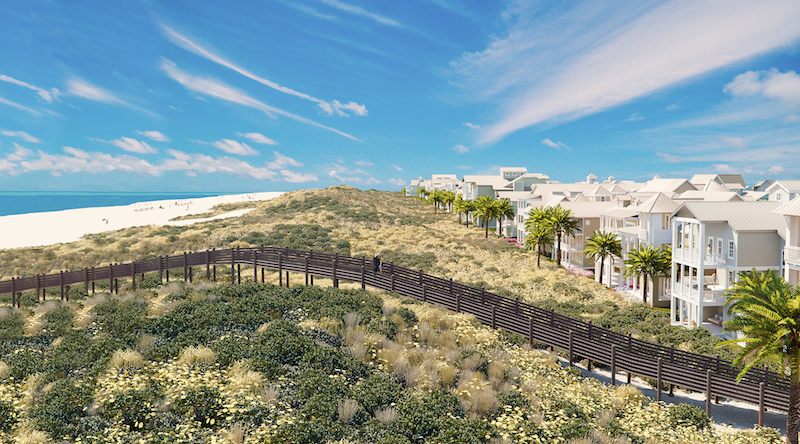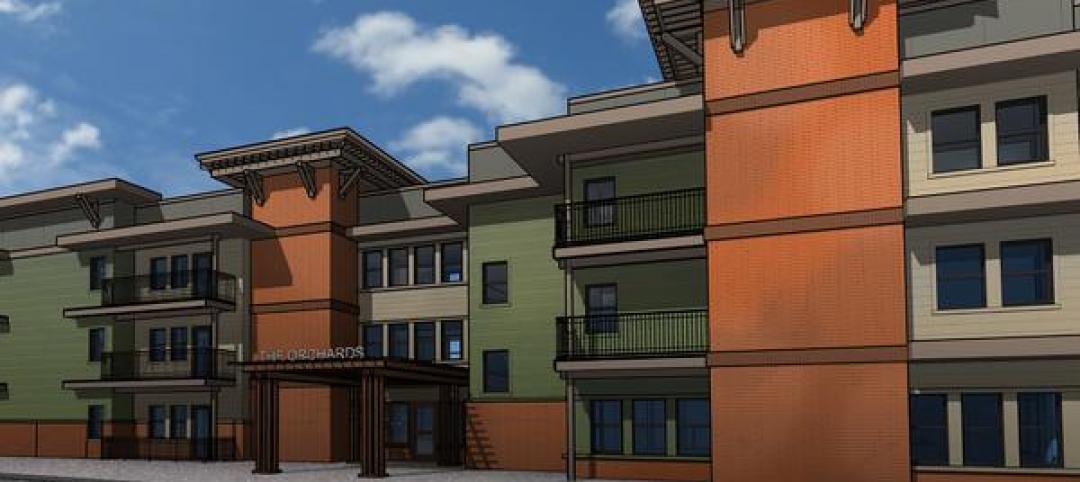Port Aransas is a city on Mustang Island, an 18-mile-long barrier island on the eastern coast of Texas along the Gulf of Mexico, about 180 miles southeast of San Antonio. The city is a fishing, beach, and resort village with 4,000 local residents and five million visitors per year, according to the local Chamber of Commerce. Eco-tourism is one of its economic focuses.
After incurring major damage from Hurricane Harvey in August 2017, Port Aransas has been attracting new development that includes the city’s first conference center, for assemblies of between 500 and 2,000 people, which is scheduled to open in 2021. A 225-key hotel-conference center is slated to break ground next February, as is a new marina/ resort sometime next year.
Port Aransas is also where three upscale mixed-use communities are under development or expansion. These include:
•Cinnamon Shore South—a $1.3 billion, 300-acre subdivision within the 1,000-acre Cinnamon Shore beachfront master planned community—will include luxury homes, Town Center residences, community pools, dining and retail districts, a boutique hotel and a health and wellness center.
•Last June, Palmilla Beach Resort & Golf Community, developed and owned by McCombs Properties, opened a nine-hole golf course, plus a three-hole par-3 course with driving range called The Loop. Palmilla offers condos, townhouses, cottages, and custom homes, starting from the $500s. MPA Austin and Cornerstone Architects are the architects, Schnell Urban Design the design consultant and land planner, and Fortis Homes, Turichhi Builders, Arbogast Home and Pelican Custom Homes the residential contractors.
•Sunflower Beach Resorts & Residences, situated within 50 acres of protected dune reserves, has nearly completed its first phase of The Camp, consisting of 25 luxury one- and two-bedroom cabins priced from $382,000 to $499,000. The community itself features beach homes, 21 single-level poolside condos, and several buildable lots. The Camp’s developers are BMG Wonderland and Legacy DCS.
Sea Oats Group is the developer of Cinnamon Shore. Its CEO, Jeff Lamkin, tells BD+C that the first phase of Cinnamon Shore South, which broke ground a year ago, has eight of the first 20 homes under construction. The build-out of Cinnamon Shore South is expected to encompass around 1,000 housing units, and take between 15 and 20 years to complete.

The houses under construction at Cinnamon Shore South are all elevated and built to resist flooding and high winds.
The elevations of all of the buildings in this subdivision will be 10 to 11 feet above sea level. Lamkin says the street is 6½ feet above, and the buildings will sit on leakproof elevated slabs over sand fill that’s another 4½ feet above street level.
The Texas Gulf Coast is perennially susceptible to high winds. Lamkin says that for resilience, the houses at Cinnamon Shore South will include bolts placed every 18 inches around the perimeter that secure the roof to the foundation. The houses’ windows can resist winds up to 140 miles per hour. Sea Oats is specifying 32-gauge aluminum roofing, Azek decking, and Hardiplank siding. The community was designed so there’s not a lot of debris when winds kick up.
(Cinnamon Shore South’s building team includes Kissling Architecture and the Waggoner Custom Homes.)
Lamkin says that before Sea Oats considers developing beachfront property, it compares old and new shoreline imagery to determine accretion, stability, and erosion. It also looks at the post-storm durability of the property’s dune system; Cinnamon Shore’s dunes are between 14 and 30 ft high, and 300 ft wide, he says.
Lamkin calculates that resilience can double the cost of construction for coastal projects. Sea Oats spent $600,000 alone to build a dune crossover to the community’s golf course.
But Port Aransas’ marketing pitch is that it offers luxury living at a bargain compared to similar homes and communities in coastal Florida or California. Fifty-foot Gulf-front lots there are still selling for under $1 million, versus $4 million to $5 million in Florida or California. “Coastal homes in Texas might sell for $3 million, compared to $9 million in Florida and $12 million in California, mostly because the cost of land,” Lamkin explains.
When asked why it took so long for developers to leap into beachfront property like Port Aransas, Lamkin—whose company started the 63-acre Cinnamon Shore North in 2007—says that Texas’ economy has shifted from depending on gas and oil for 70% of its tax revenue in the 1980s, to where that sector contributes only about 20% today. Other sectors, like tourism and entertainment, have been picking up the slack.
It hasn’t hurt, either, that the housing market in Texas is still relatively inexpensive, vis a vis other markets on the east and west coast. And Texas led all states in terms of seasonally adjusted annual job growth by adding 323,000 jobs from July 2018 to July 2019, according to the Texas Workforce Commission. These factors have driven Texas’ population to exceed 29 million, from 25.1 million in 2010.
Related Stories
| Jun 19, 2014
First look: JDS Architects' roller-coaster-like design for Istanbul waterfront development
The development's wavy and groovy design promises unobstructed views of the Marmara Sea for every unit.
| Jun 19, 2014
Singapore's 'Tree House' vertical gardens break Guinness World Record
The high-rise development will have a 24,638-sf vertical garden, breaking a Guinness World Record.
| Jun 18, 2014
Largest Passive House structure in the U.S. to be built in Oregon
Orchards at Orenco, a 57-unit affordable housing complex in Hillsboro, Oregon, is the first of a three-phase, three-building complex.
| Jun 18, 2014
SOM's twisting tower wins design competition for Sweden's tallest skyscraper
The skyscraper, which will reach 230 meters and is named Polstjärnan, or "The Pole Star," is to be built in Gothenburg, Sweden.
| Jun 18, 2014
Arup uses 3D printing to fabricate one-of-a-kind structural steel components
The firm's research shows that 3D printing has the potential to reduce costs, cut waste, and slash the carbon footprint of the construction sector.
| Jun 17, 2014
U.S. Census report examines why Americans move
According to the U.S. Census Bureau, 35.9 million people moved between 2012 and 2013, meaning that 11.7% of the U.S. population moved in one year. The report seeks to examine why.
| Jun 13, 2014
Grocery stores, restaurants make neighborhoods most desirable [infographic]
John Burns Real Estate Consulting ranks the top 25 housing amenities by generation, based on feedback from more than 20,000 home shoppers.
| Jun 12, 2014
Austrian university develops 'inflatable' concrete dome method
Constructing a concrete dome is a costly process, but this may change soon. A team from the Vienna University of Technology has developed a method that allows concrete domes to form with the use of air and steel cables instead of expensive, timber supporting structures.
| Jun 11, 2014
David Adjaye’s housing project in Sugar Hill nears completion
A new development in New York's historic Sugar Hill district nears completion, designed to be an icon for the neighborhood's rich history.
| Jun 11, 2014
Koolhaas’ OMA teams with chemical company to study link between color and economy
Dutch company AkzoNobel is partnering with Rem Koolhaas' firm OMA to study how the application of colorful paints and coatings can affect a city's economic development.
















